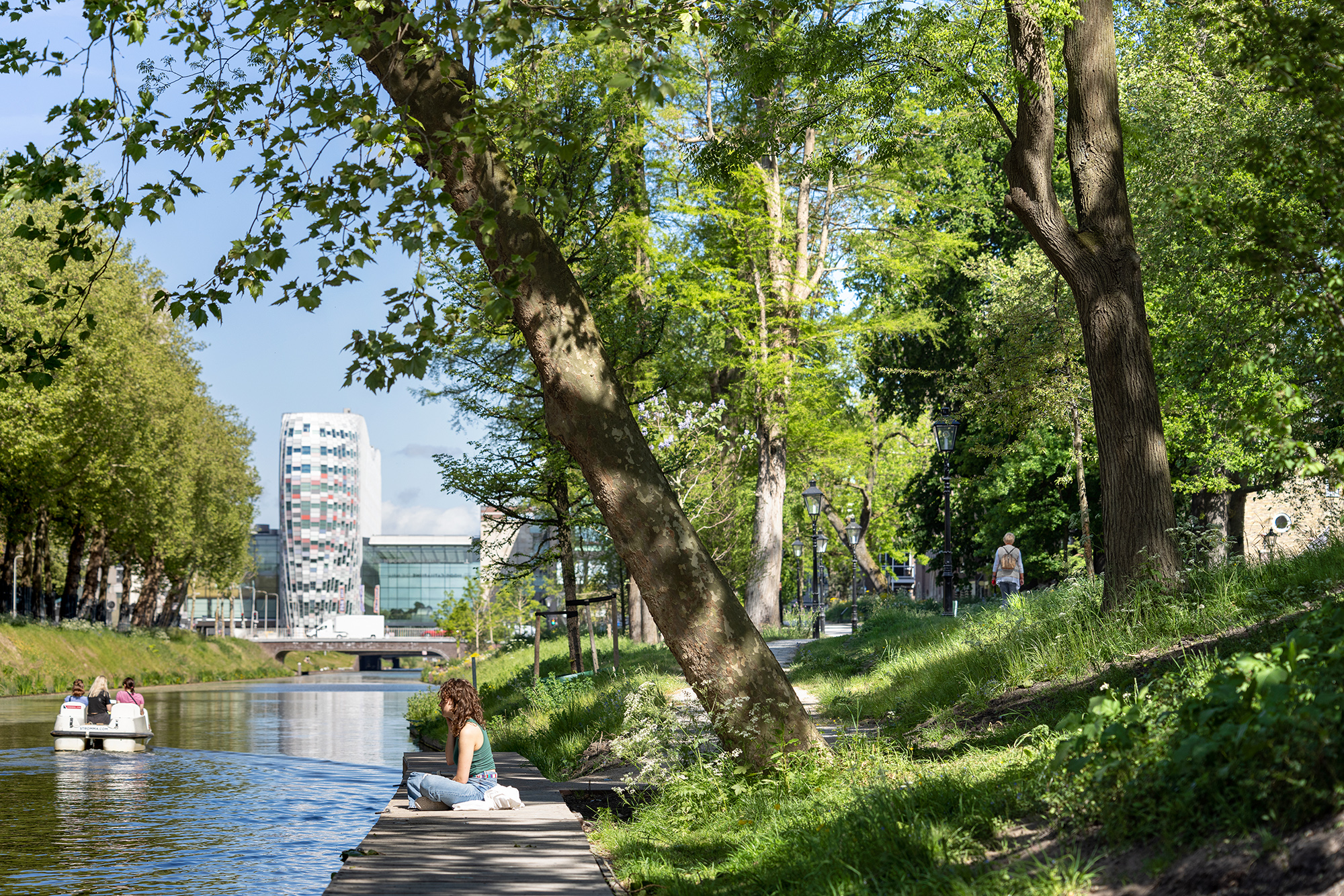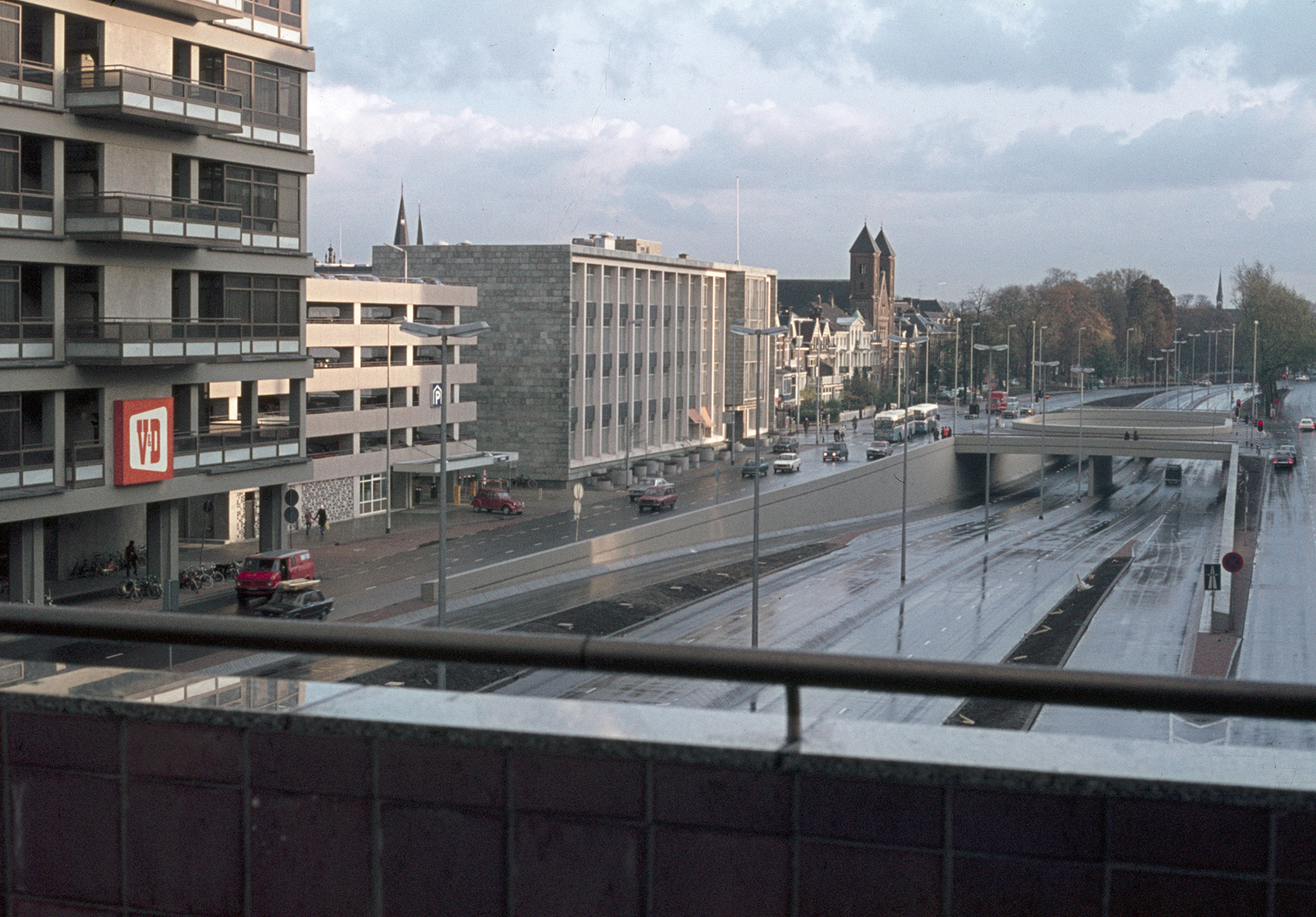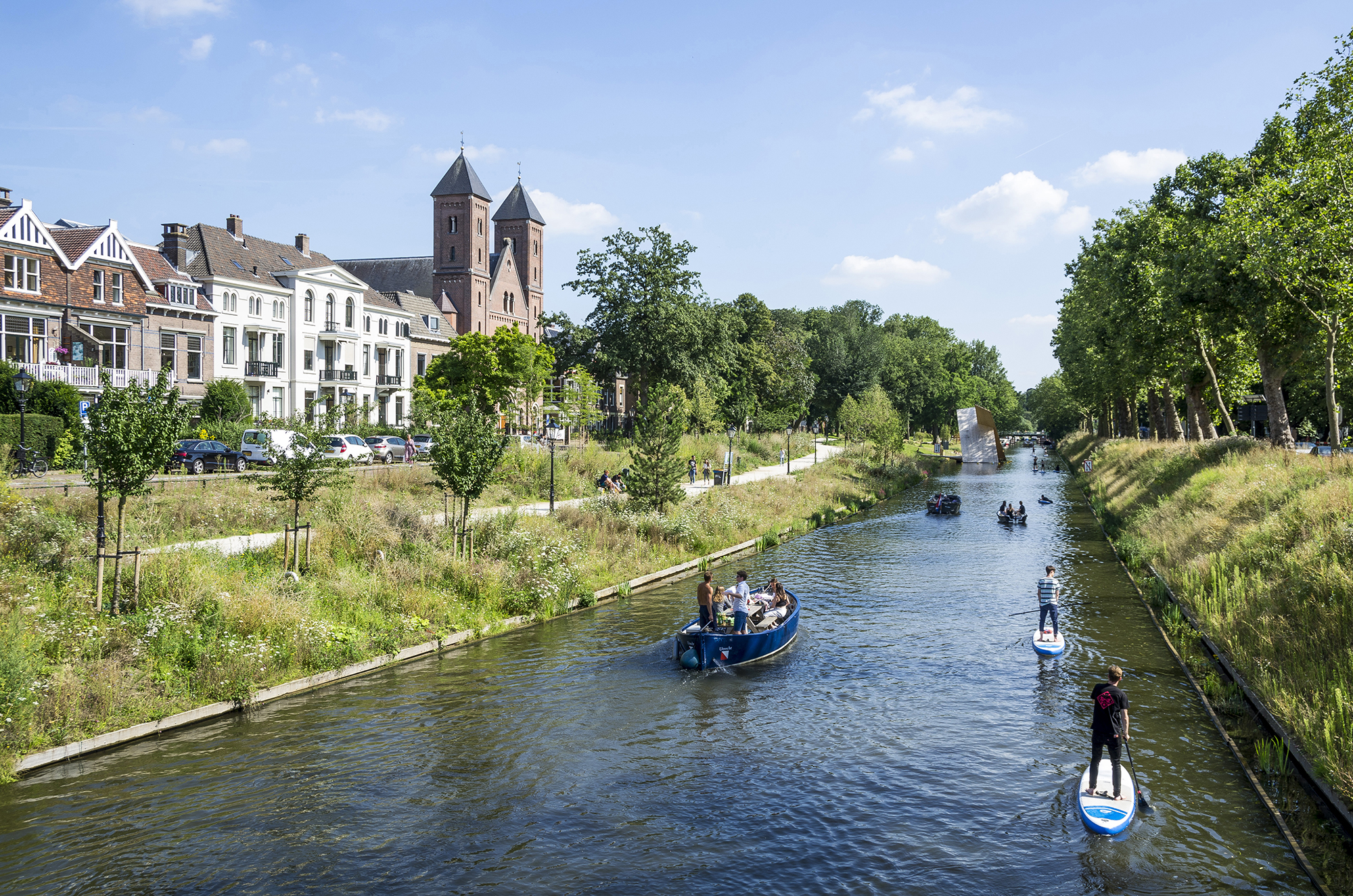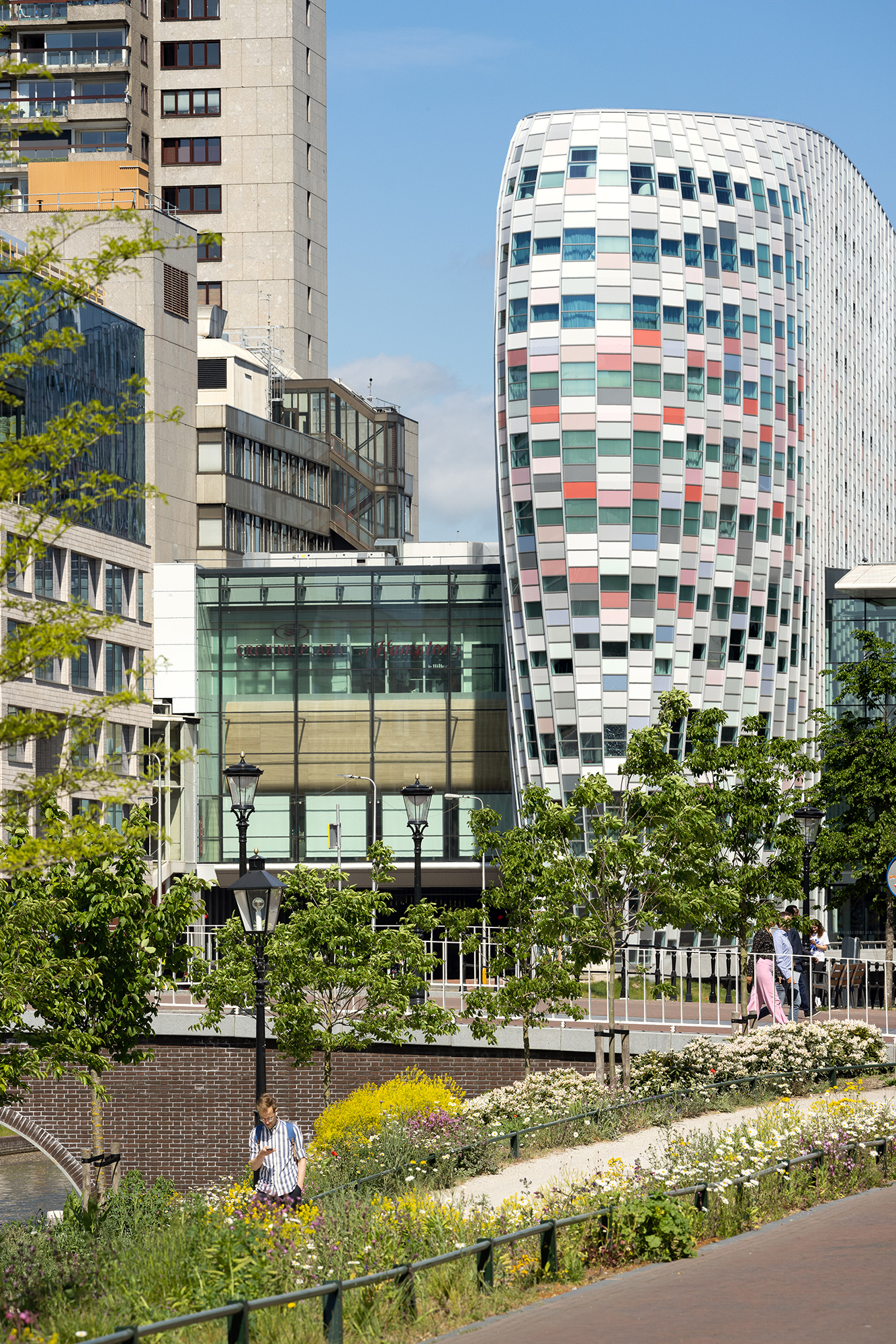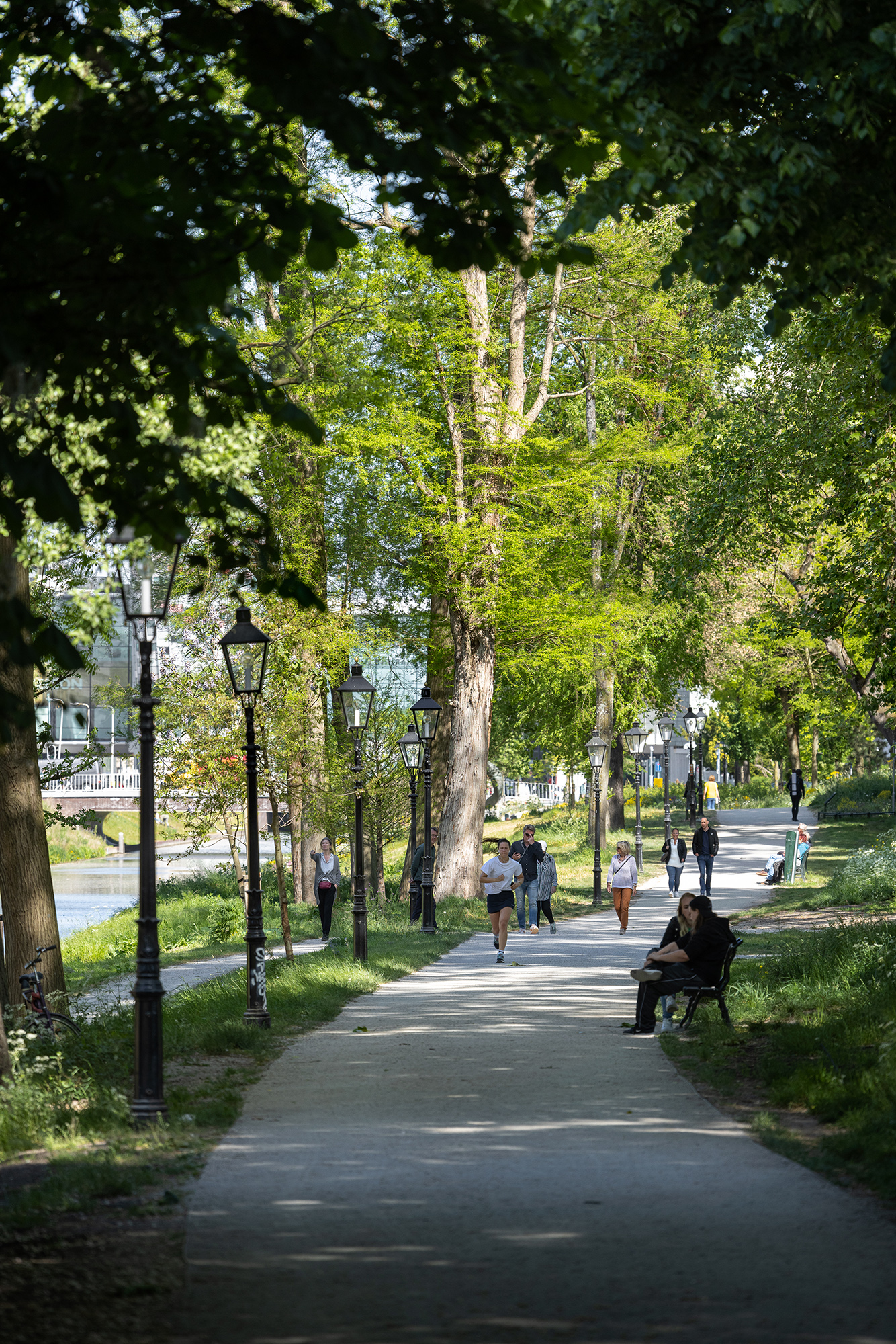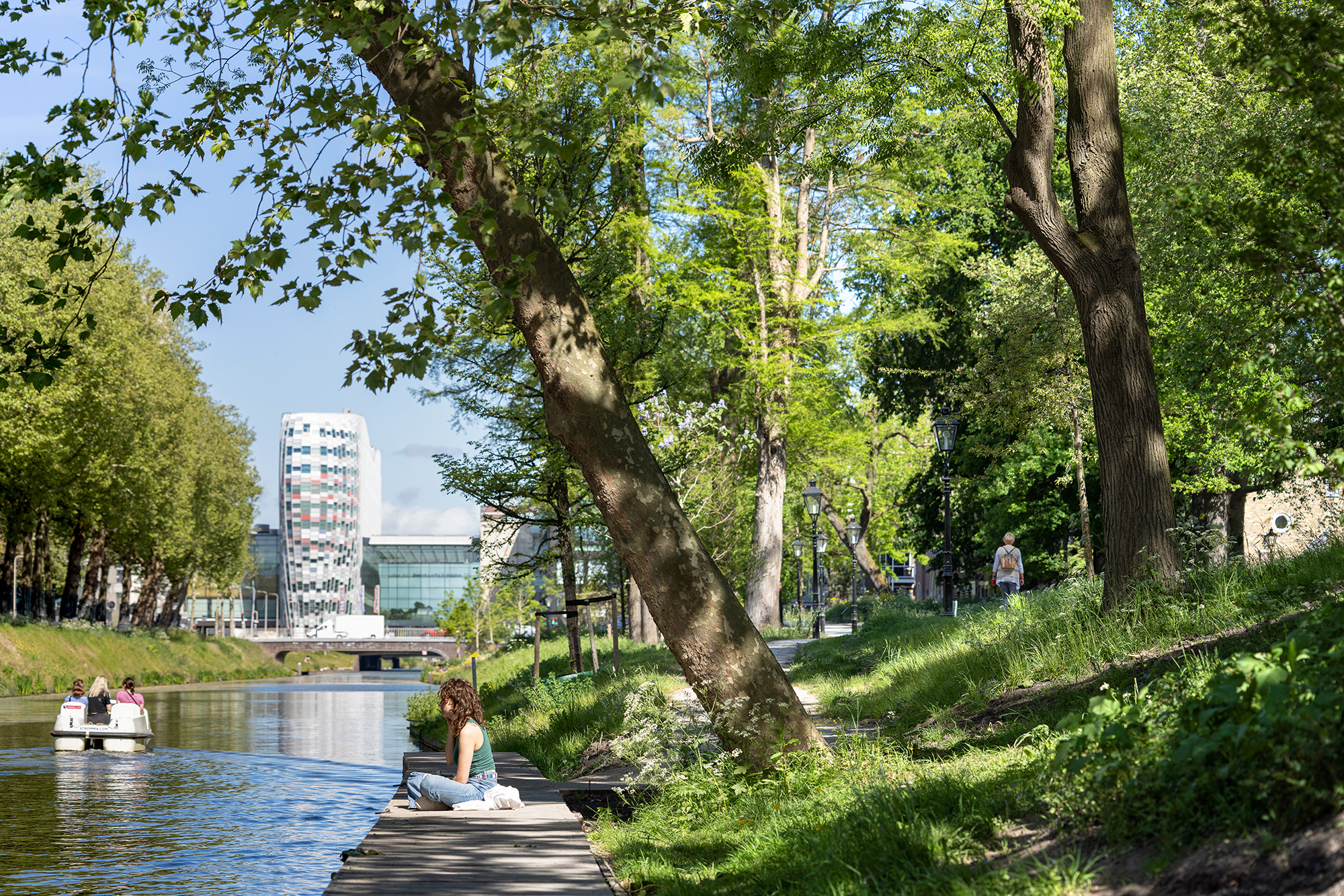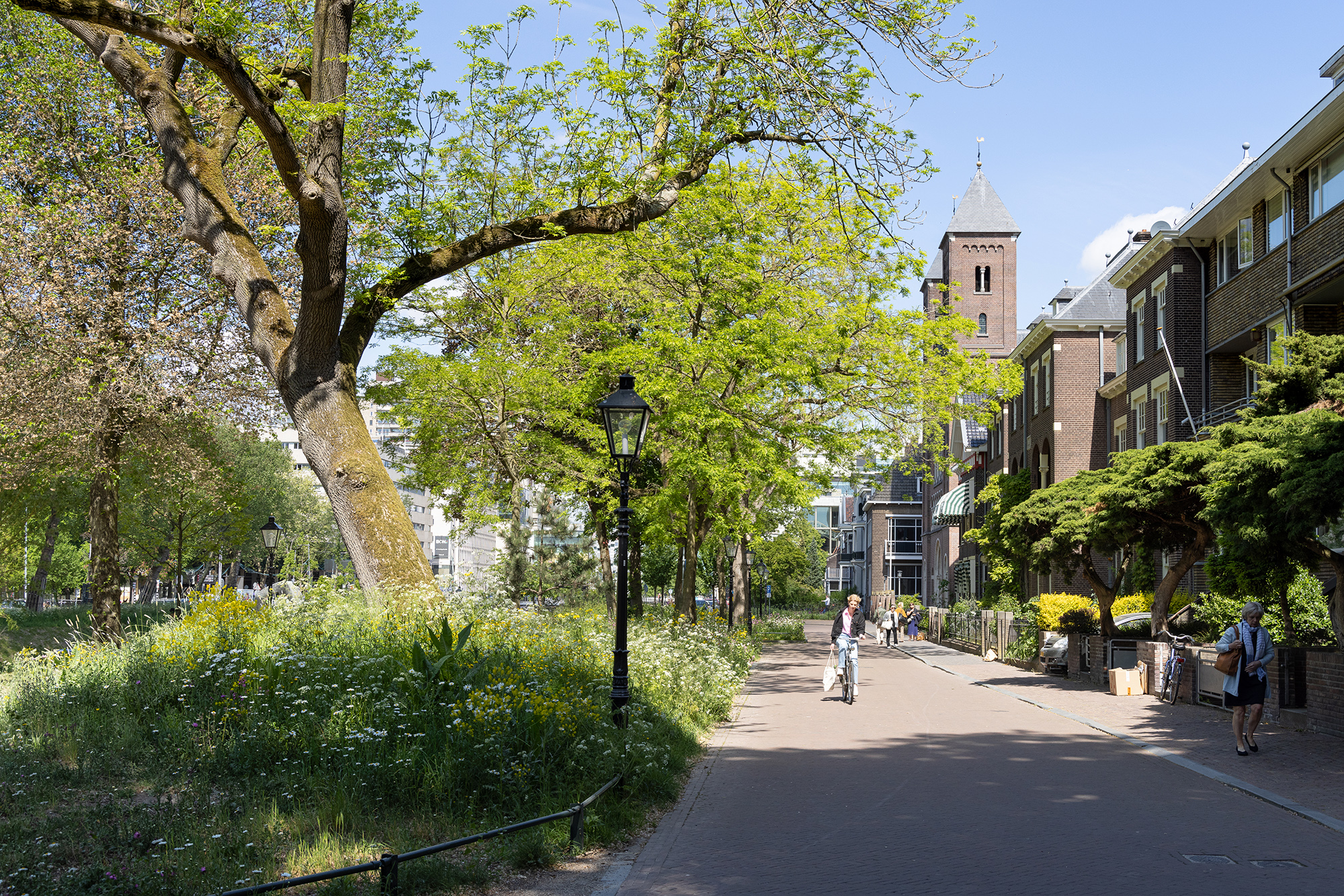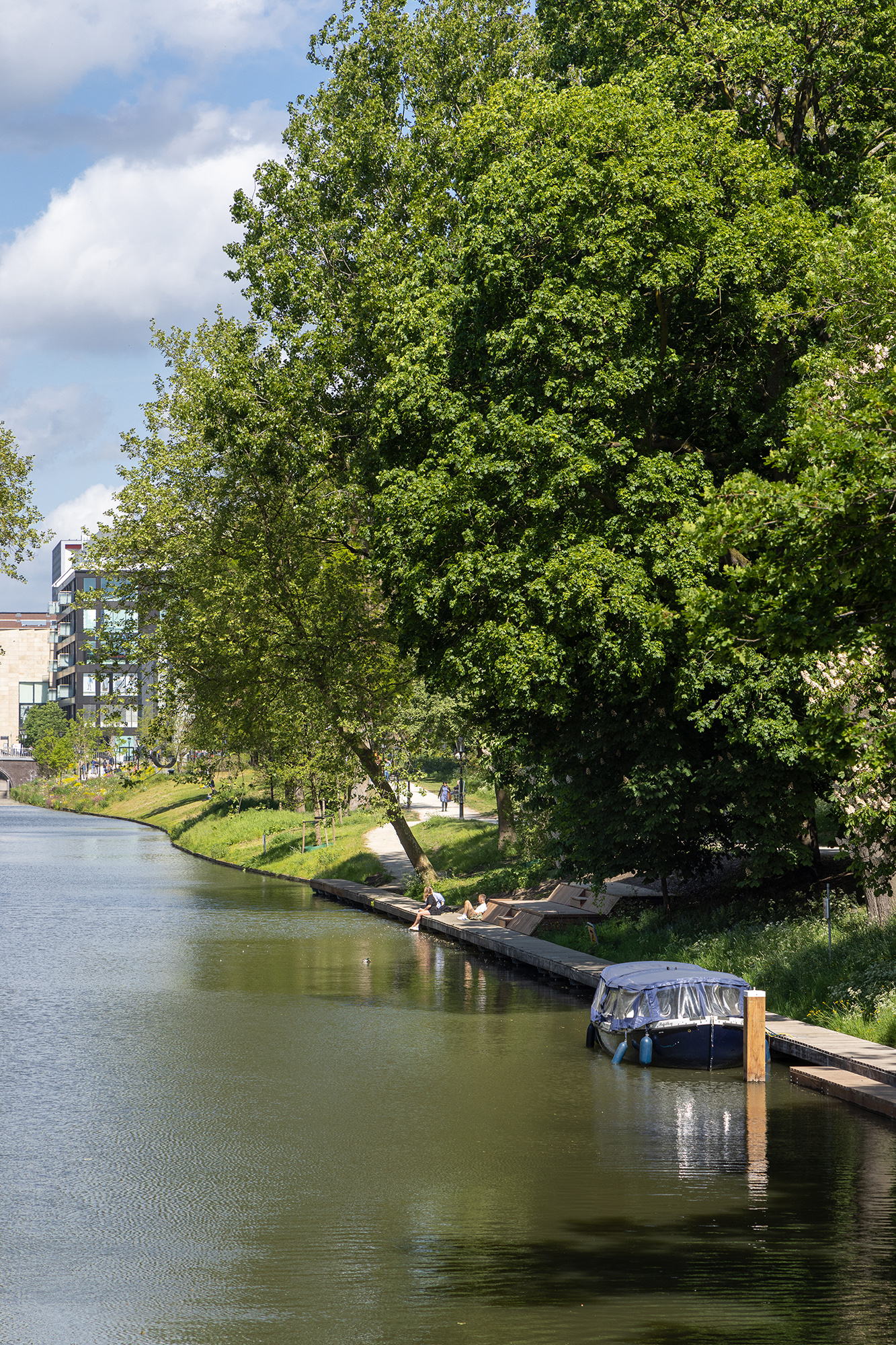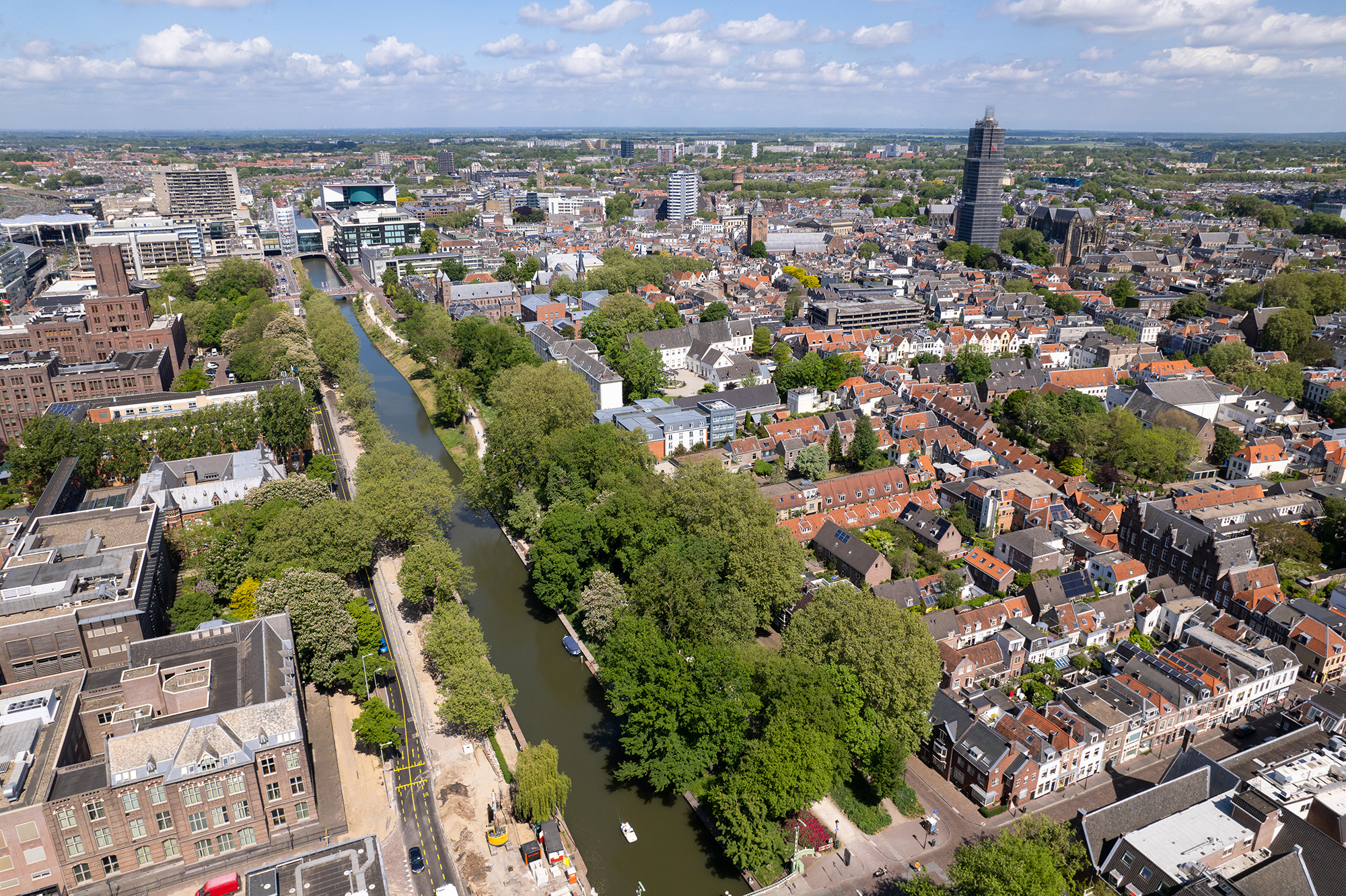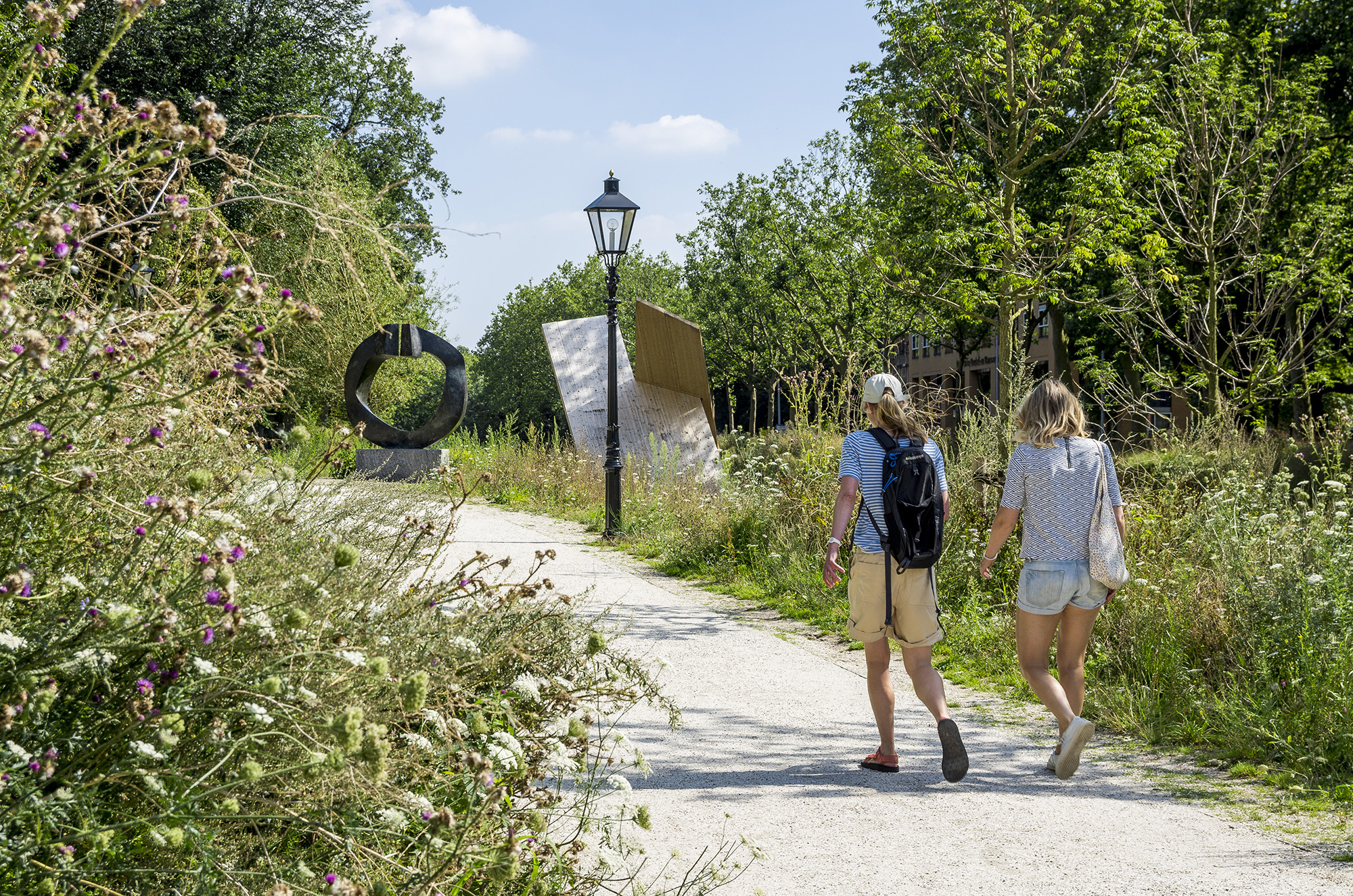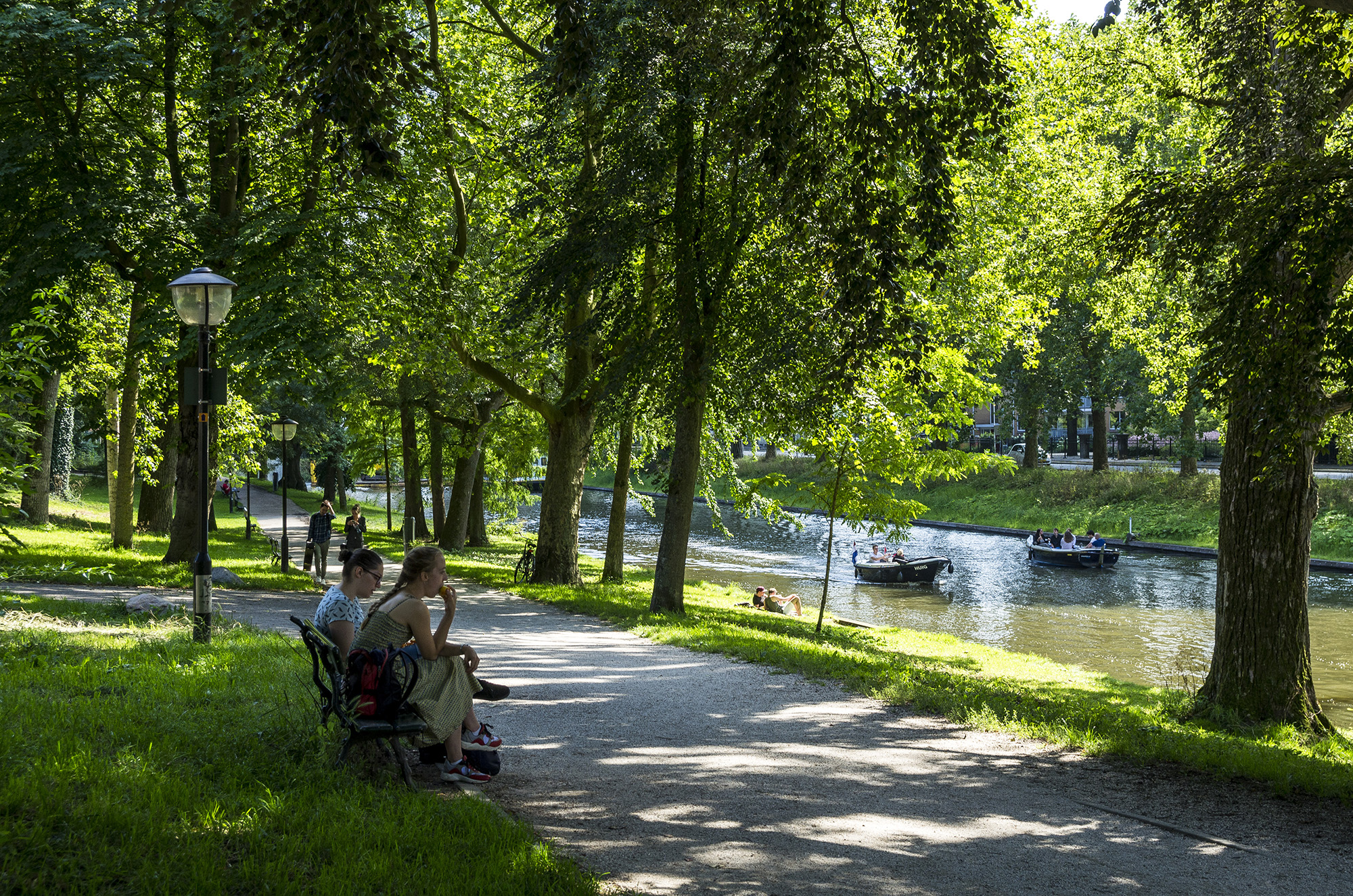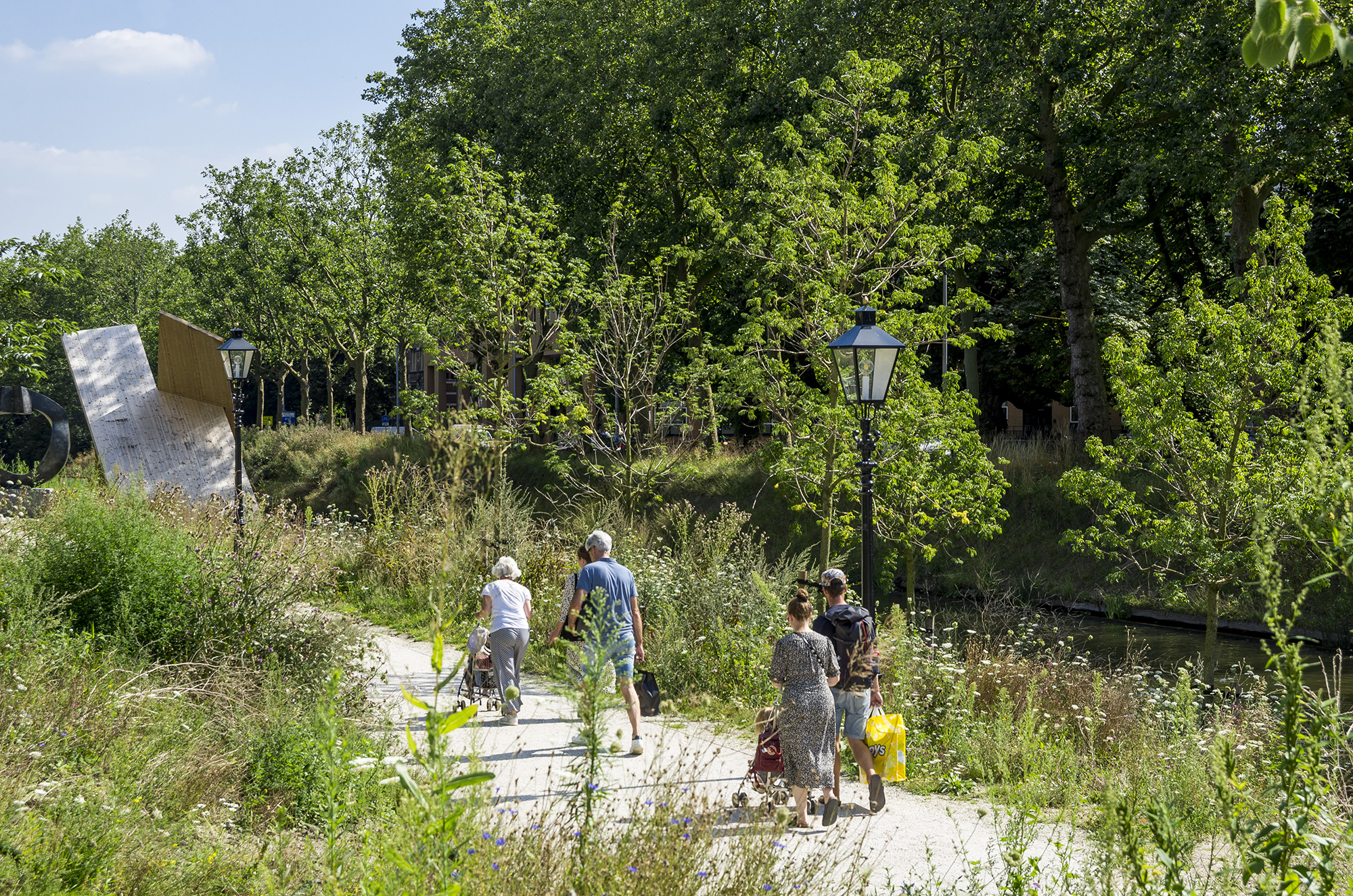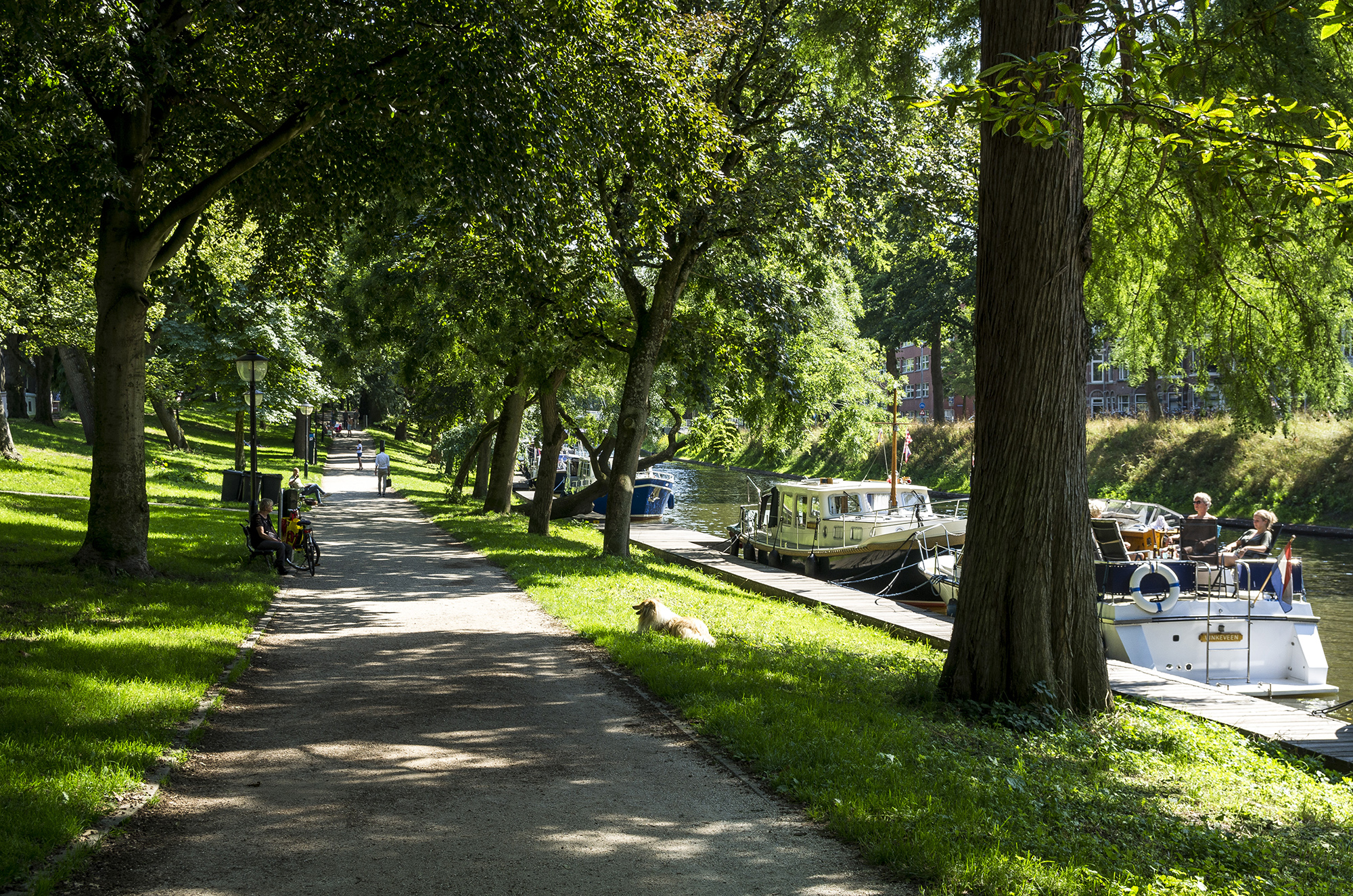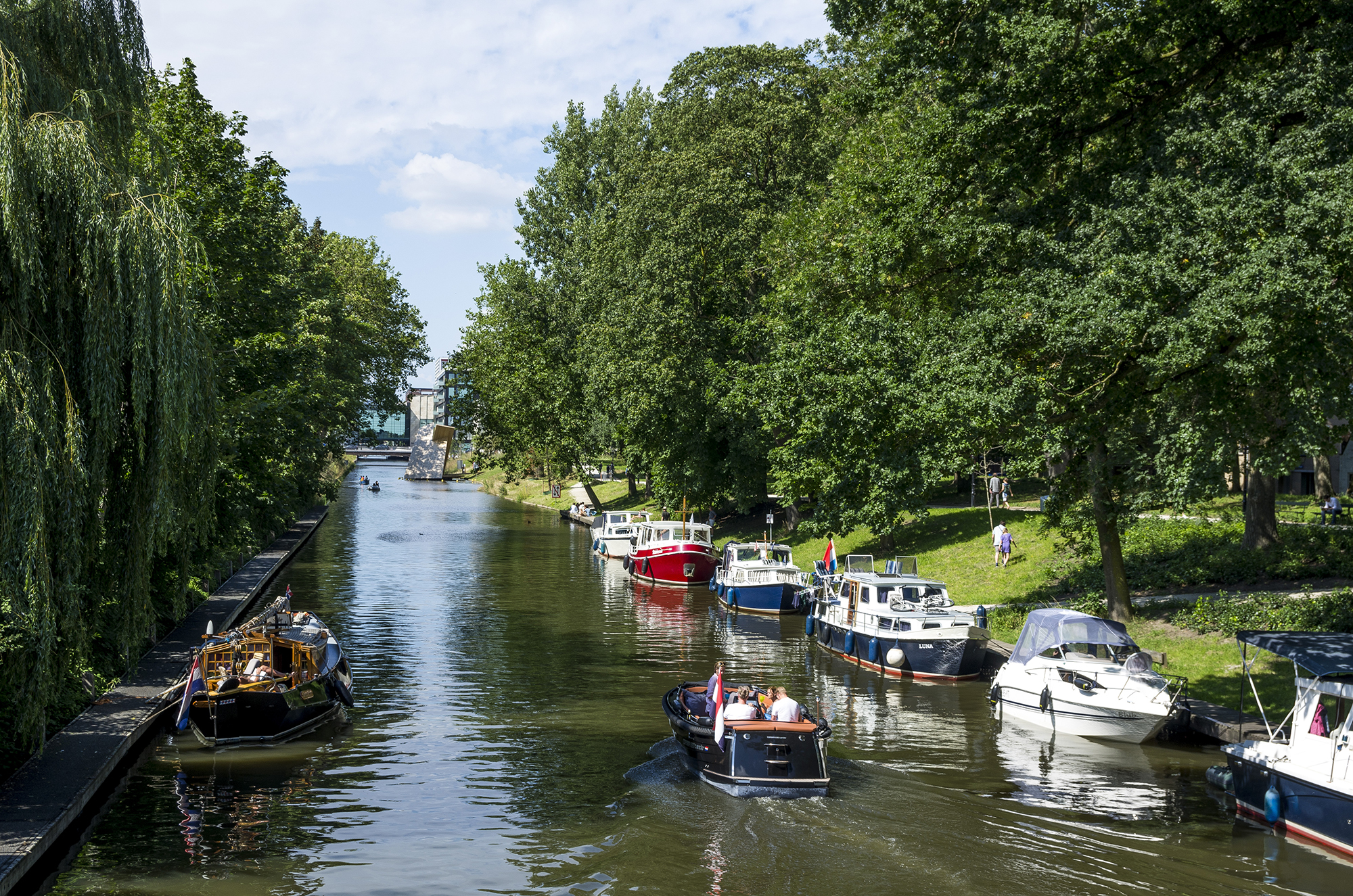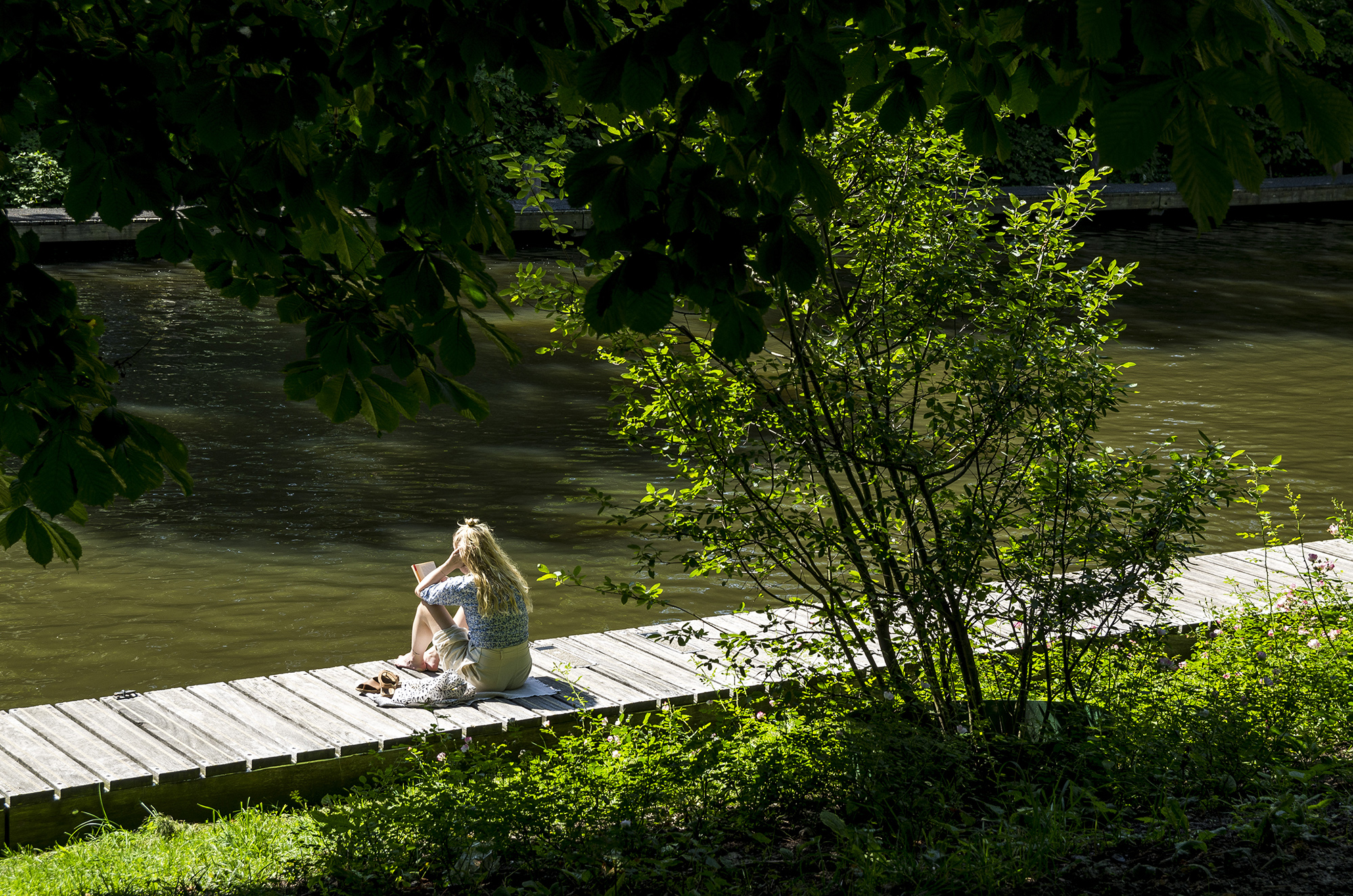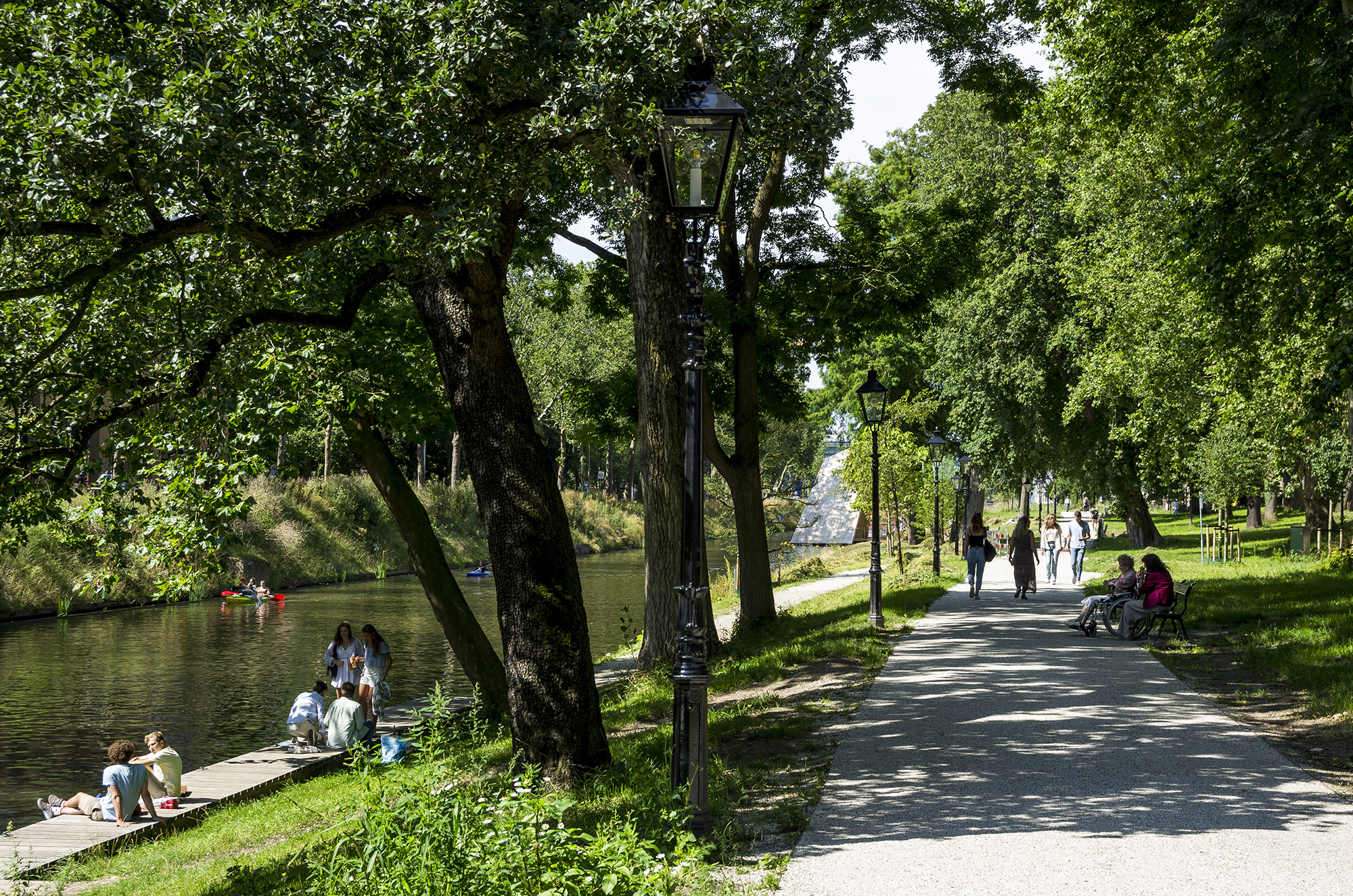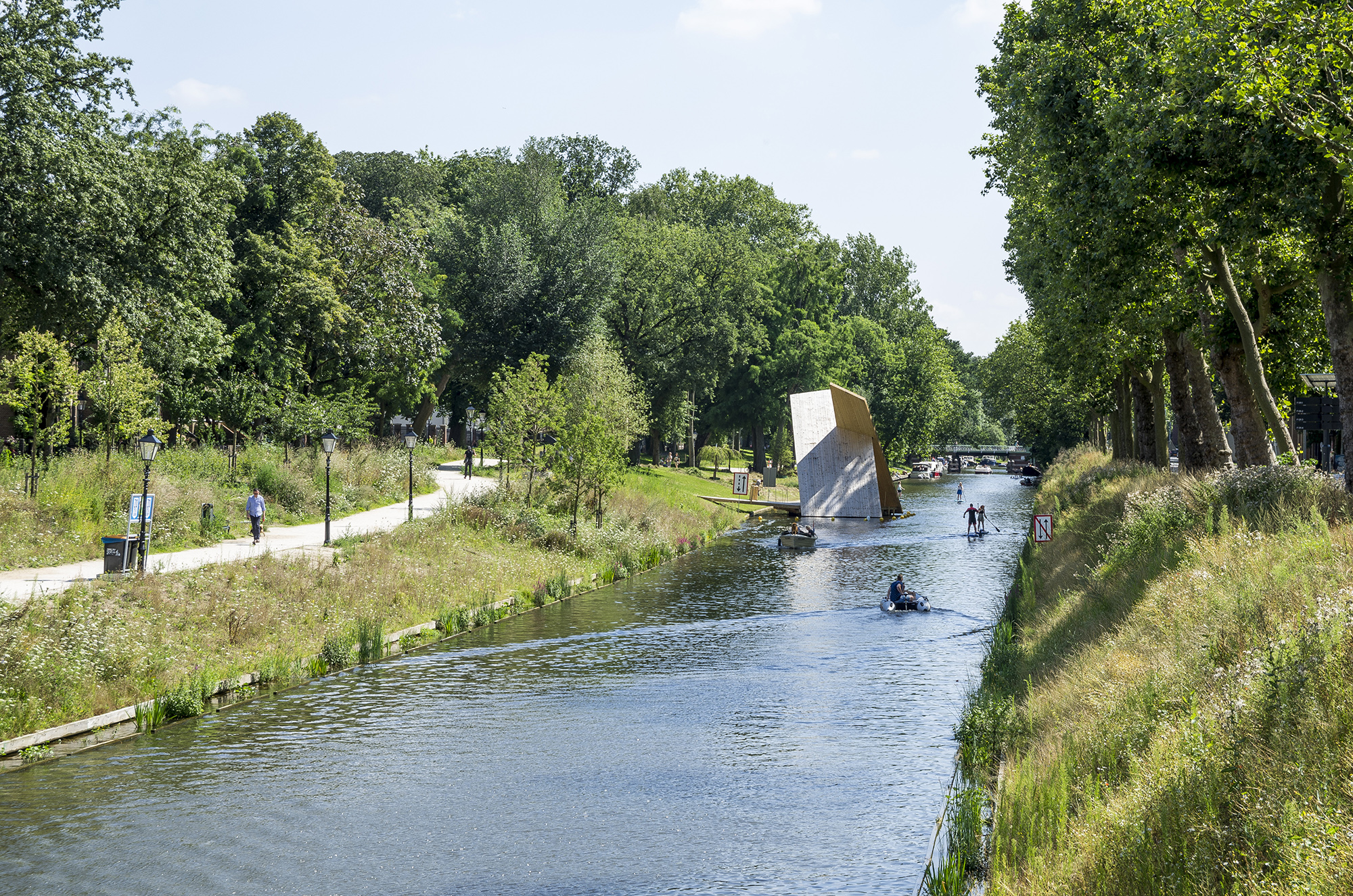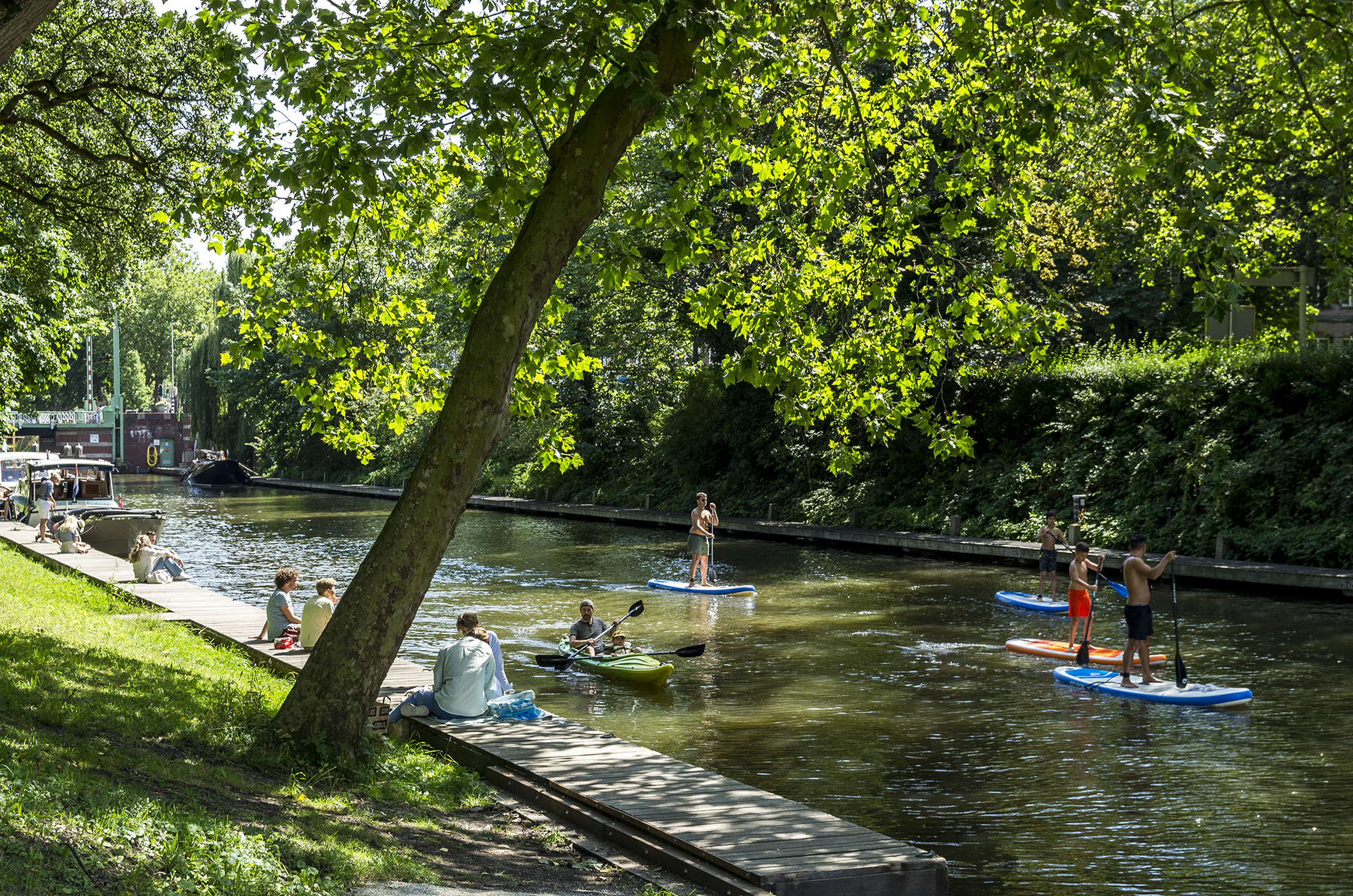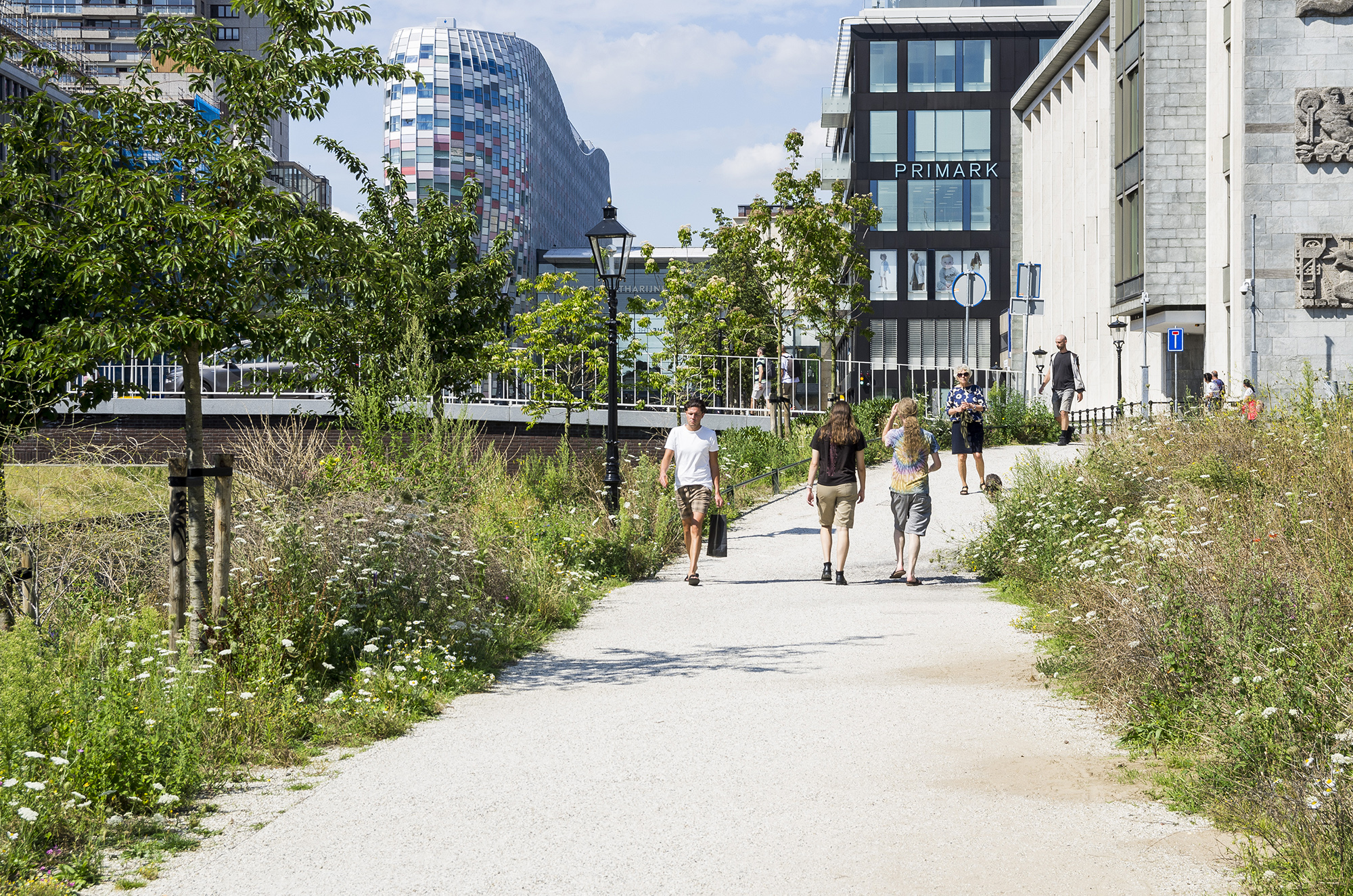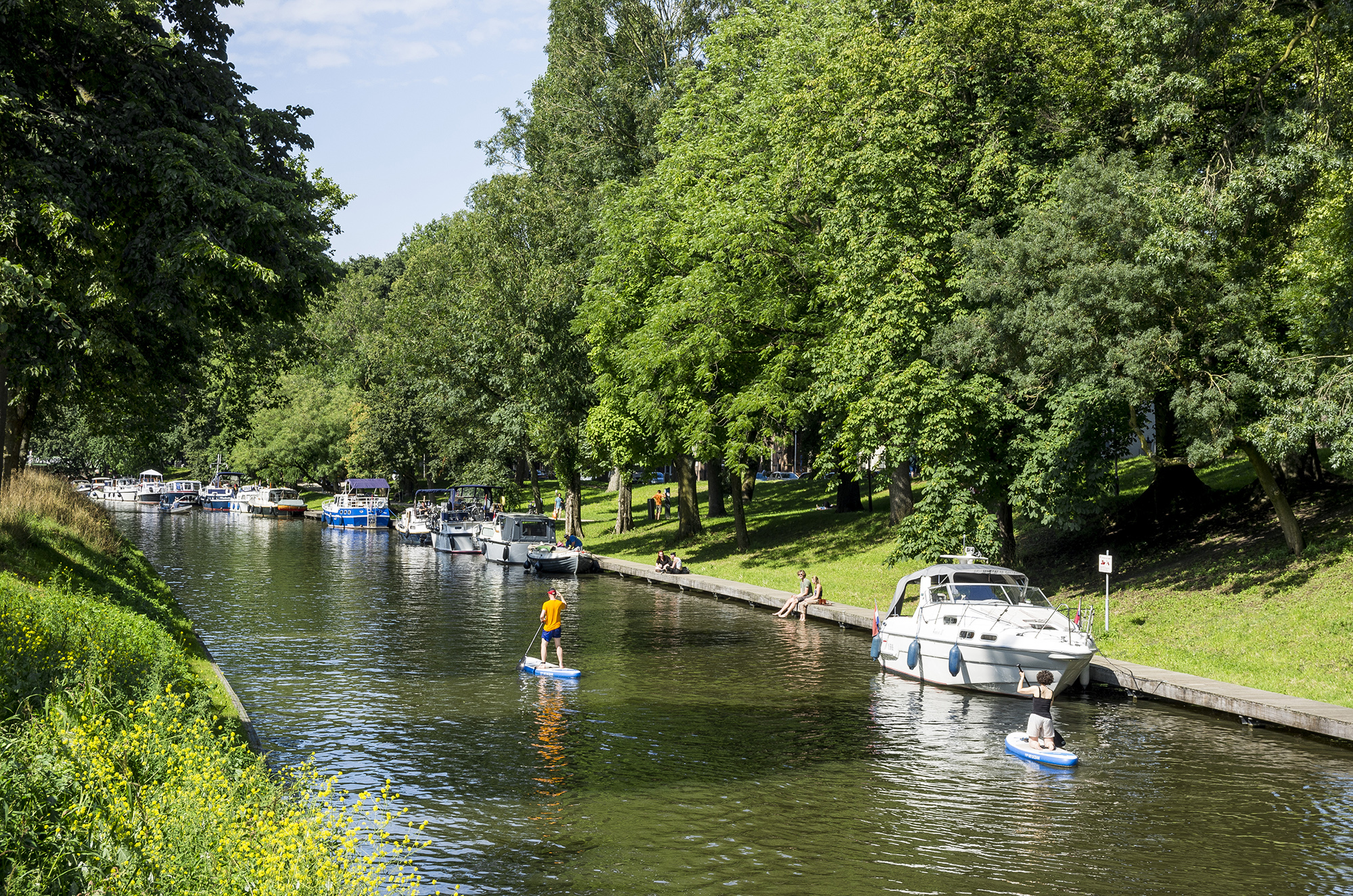Previous state
For centuries, Utrecht, a city founded in Roman times, was surrounded by a defensive wall and an exterior canal, the Catharijnesingel. After the demolition of the walls, a park designed by Jan David Zocher (1791-1870) occupied a large part of the area once given over to the former defences. In 1958, the Catharijnesingel was on the verge of disappearing to build a new ring road. Following years of debate, in 1969 it was partially drained to make way for a major traffic artery. This and other urban operations carried out during the 1970s had disastrous consequences for the public space in the city centre. Residents felt neglected as a result of interventions that favoured visitors and vehicle traffic and expressed strong opposition to the disappearance of water in the city through various campaigns in support of restoring the canal.
In a referendum held in 2002, the citizens of Utrecht voted to restore the Catharijnesingel, and a process began in which the city council, residents and landscape architects from OKRA worked on the new design to restore the canal.
Aim of the intervention
The redevelopment of the area around the Utrecht central station, initially planned in the 1980s, is one of the largest and most complex projects in the Netherlands. The goal was to create a better connection between the historic centre and the station, improving habitability and pedestrian connections through public space, while reducing vehicle traffic in the city centre to make room for cyclists and pedestrians. This project included the restoration of the Catharijnesingel, closing the road created in 1969, and recovering the canal as a recreational space for the city’s inhabitants. The restoration took place in two phases, the first in 2015 and the second in 2020.
Description
The restoration of the final section of the Catharijnesingel includes an area roughly 1.1 kilometres long. A total of about 40,000 cubic metres of water has returned to the canal, and its length now reaches almost six kilometres. Working on the course of the Catharijnesingel and the expansion of the Zocherpark, OKRA reorganised the traffic that occupied the site, diverting cars and giving priority to pedestrians. The extended walking path along the canal invites recreational and sports use; visitors can stroll through meadows among works of art, as well as numerous leisure areas and a variety of planted areas, each with its own species.
Recovering access to the water is the key aspect of this project and the reason why visitors will want to return to the Catharijnesingel. Whether engaging in water-based activities or walking along the water’s edge where the park is reflected on the surface, the inhabitants of Utrecht can experience the city’s historical relationship with the water and the canal in a new space.
A varied grove of trees – poplars, planes, cherry plums and elms – connects this new park with the existing Zocherpark. OKRA paid close attention to biodiversity in their choice of trees, including, for example, flowering trees that attract bees. This variety, while enhancing biodiversity, also ensures different experiences for visitors throughout the seasons.
The use of materials – clinker bricks and gravel – creates a visual connection with Utrecht’s historic centre. Near the existing dock, a wooden platform can be used as a seating element, a stand or a stage. A lower section added to the existing wooden platform is used by canoers, paddle boarders and other pleasure boat users.
Assessment
The design of the Catharijnesingel follows a model that combines walking paths, the inclusion of nature, climate adaptation and cultural heritage. It is a bold, radical intervention to improve public space, which restores water, nature and the memory of the city’s historical heritage, while getting rid of cars and vehicle traffic. Due to its size and impact, the restoration of the Catharijnesingel is an important example of how public spaces in cities can be improved to adapt to the challenges of climate change, while visibly improving the quality of life of city residents.
As a consequence of the global COVID-19 pandemic, we have seen the importance of quality public spaces in cities for daily use toward encouraging small-scale outdoor activities and daily walking, while avoiding overcrowding. All this requires an attractive and safe outdoor space where people can be in contact with nature, while carrying out activities that promote social connections between the city’s inhabitants.
The Catharijnesingel adapts to this new situation by providing pedestrian paths and boat routes and enough space for outdoor recreation. The emphasis on the different microbiotopes of the green areas also makes a positive educational contribution to outdoor activities, where the changing face of nature can be contemplated while walking (or sailing) on the Catharijnesingel
[Last update: 15/11/2022]


